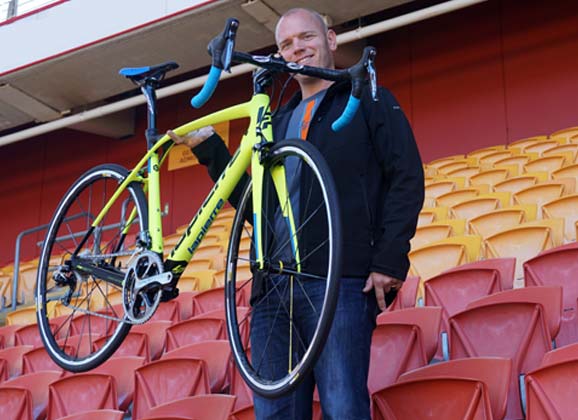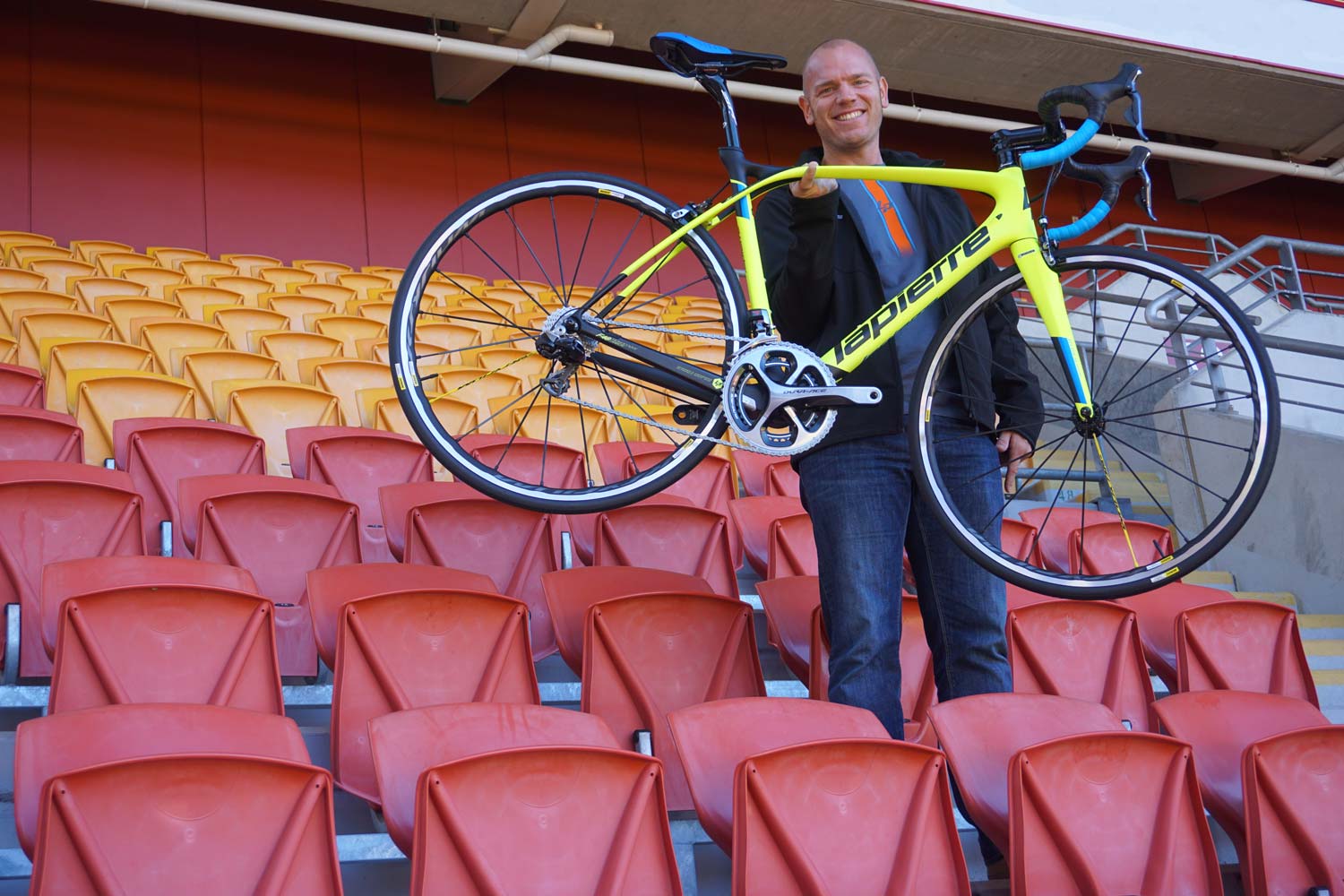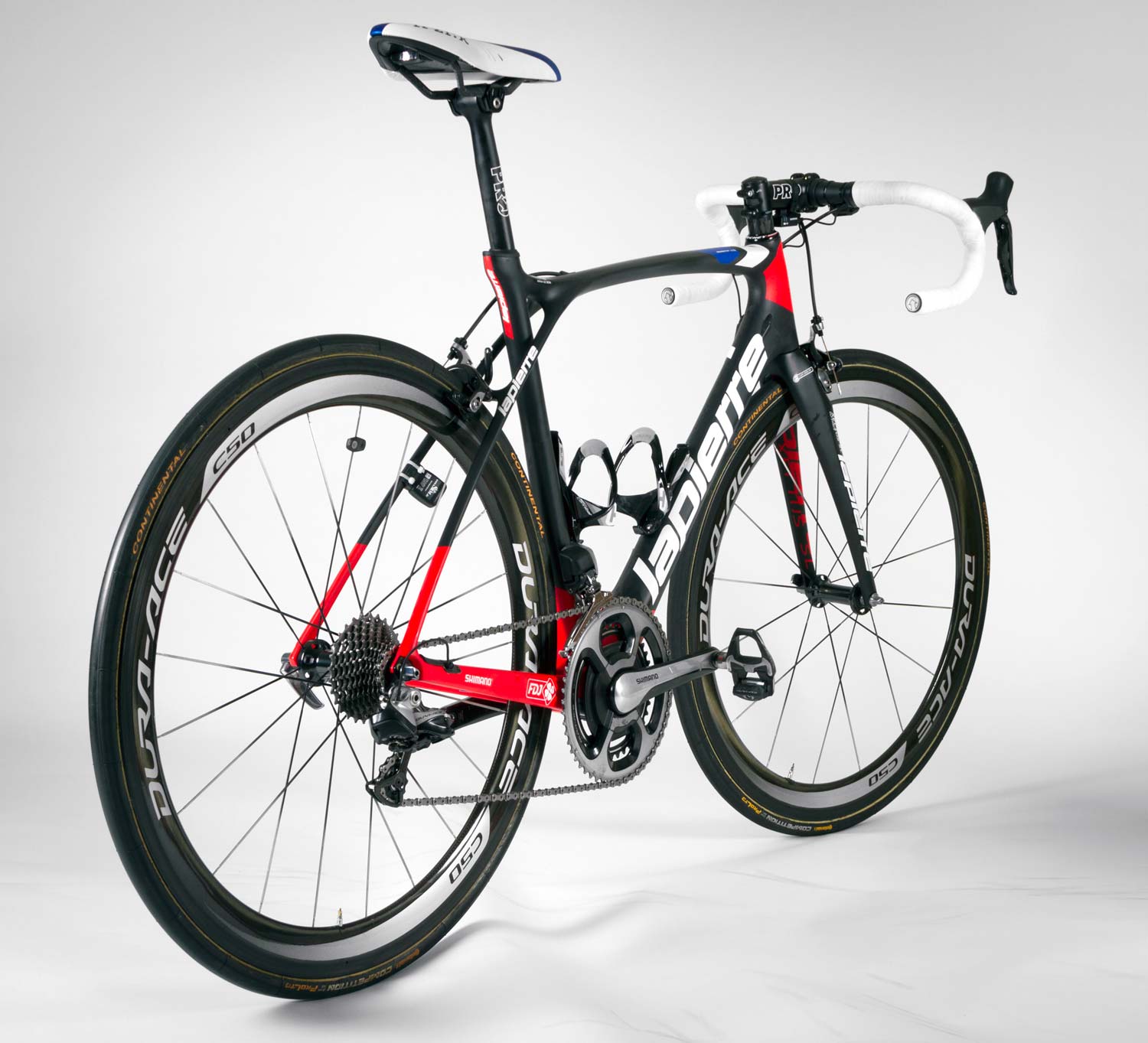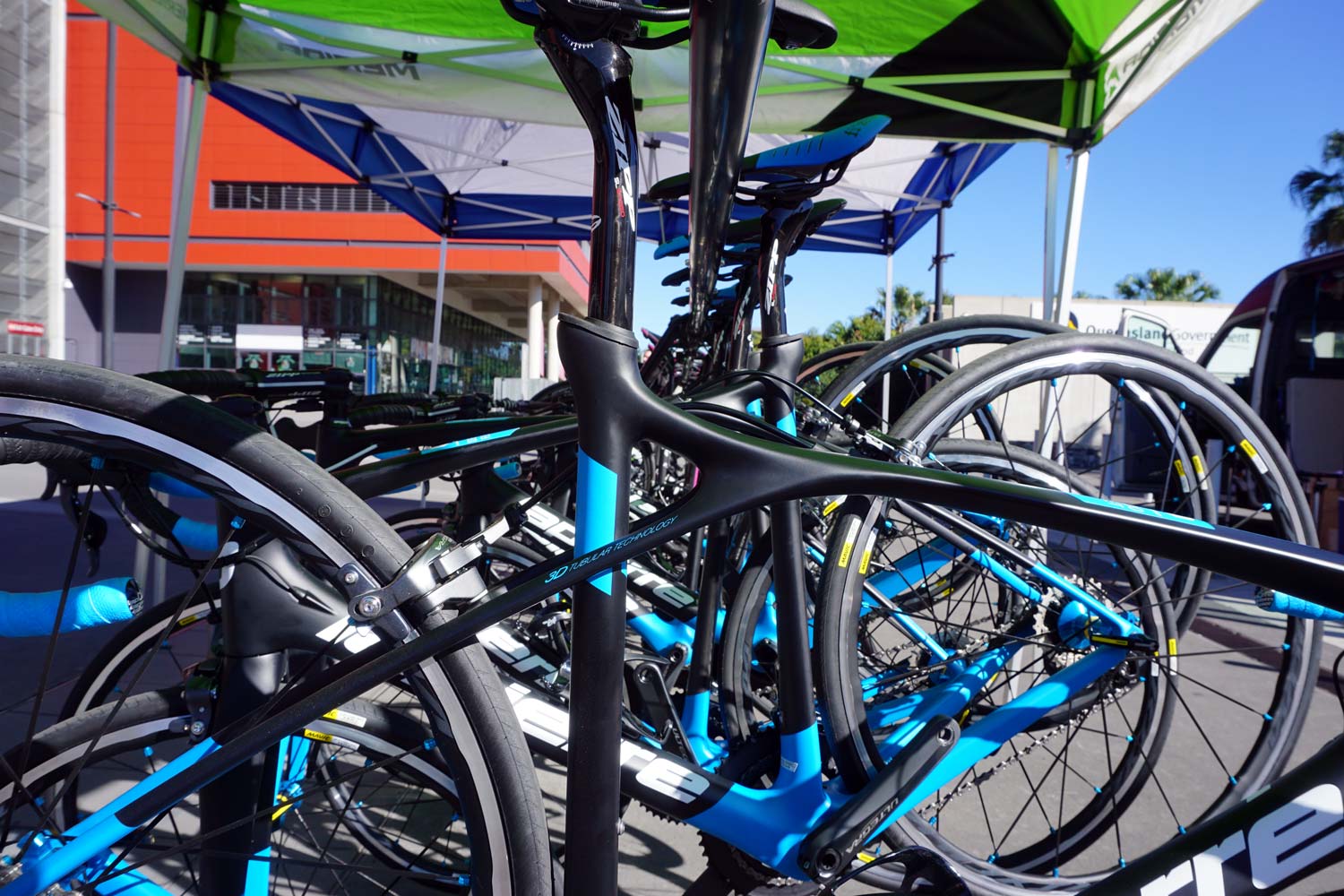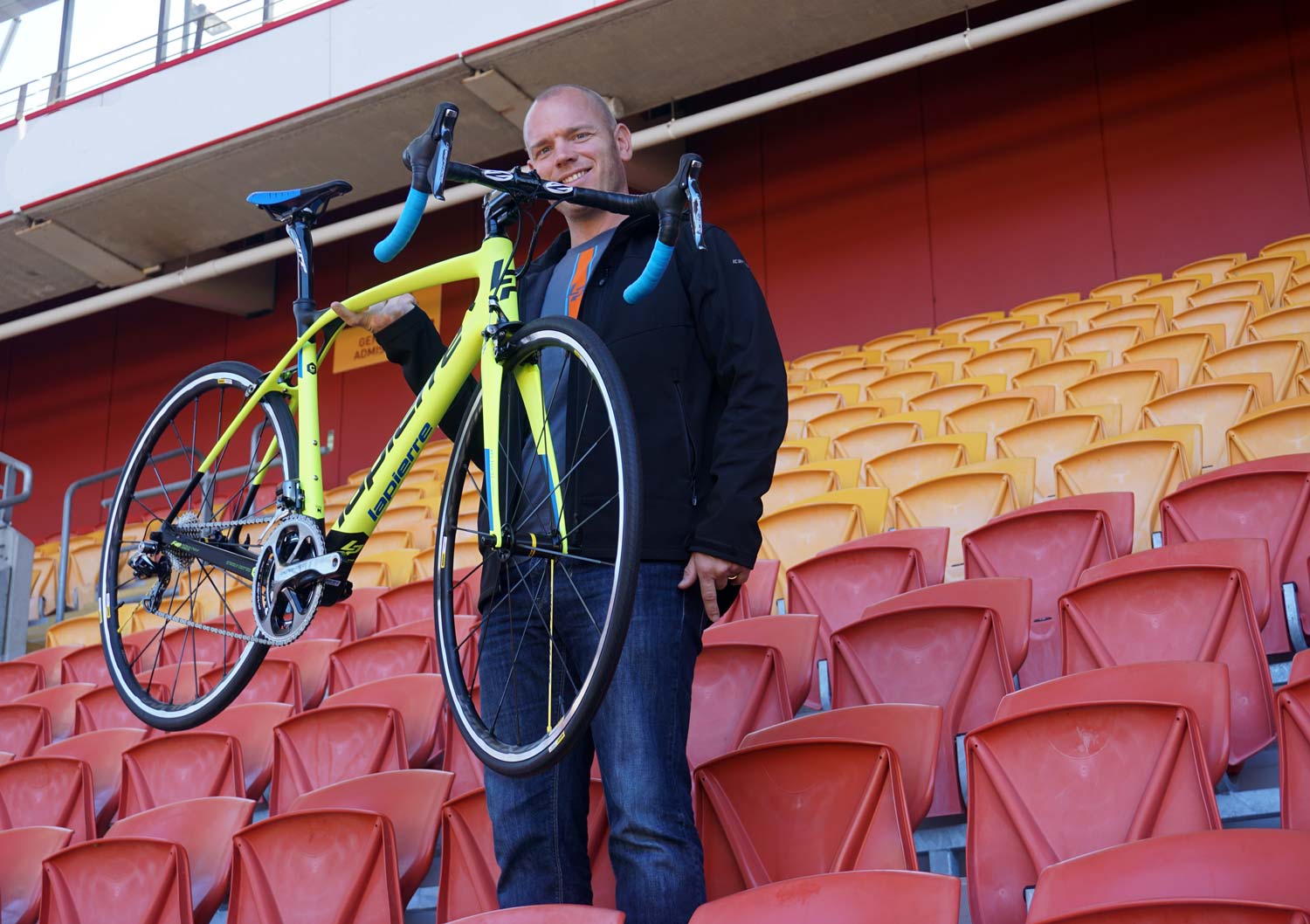Lapierre has a long association with professional cycling, on the road and off it. The French brand is part of the Accell Group and the evolution of the road bikes and MTB range is constantly evolving.
As an online extra to the review of the FDJ team bike featuring in #RIDE71, we present an interview with Lapierre’s brand manager, Johan Molenmaker. We speak about the innovation of frames like the Xelius and AirCode as well as what it’s like working with FDJ to refine the product line over the years.
RIDE: I’m talking to Johan Molenmaker – a man with a Dutch name who works for a French brand, Lapierre. He’s going to have a chat to us about the new line of road bikes from what is a very French marque… I wonder if you can tell me, is it sincerely still very much Gilles Lapierre’s brand?
Johan Molenmaker – Lapierre, Commercial Director (overseas): “Is it still ‘his’ brand? I would say, yes. Since 1996 Lapierre has been part of the Accell Group, but Accell lets us do our own thing.
“The main goals right now, so far, have been to try to align our synergies in production and purchases but from a marketing standpoint – and development and sales – there are very few synergies because we want to keep all the products and all the brands… they need to keep their own identity.”
[Note: the Accell Group is a Dutch company that boasts a vast catalogue of cycling product including the following brands: Batavus, Koga, Raleigh, Diamond Back, Lapierre and Redline.]
We’ve seen a really dramatic evolution for Lapierre. If we date back to the Australian history with the brand, Bradley McGee began importing it in 2001 or 2002 when he was still racing. He was bringing in a limited range of scandium framed bikes. In recent years, there’s been a very rapid evolution in the road market. I know Lapierre has always been very innovative with the mountain bike market, but this is a magazine with a road focus. Clearly there is a new wave of road interest in Australia, does the same apply internationally – or do you find that this is a different market all together?
“I would definitely say that there’s more interest all over the world because what we see in Europe is that the road, together with eBikes, is the growing segment.
“Mountain biking is decreasing slightly, at least in numbers. But now the eBike MTB range is stepping up as well so that is compensating from a value perspective.”
Let’s talk about the new range. For example, on the Xelius SL Ultimate there is a whole new frame configuration that is not just an aesthetic gimmick. The chainstay going around the seat tube is something that’s designed for rider comfort. You spoke about it in the presentation to dealers. Can you go through the evolution of the design process and explain how you came up with this frame?
“The main objectives were to make a more responsive bicycle, so we wanted to make it a little lighter to make it easier to climb with. The frame itself is 850 grams in a medium size so we won about 30 or 40g…
“The seatstays are now connected to the top tube instead of the seat tube; we did this because that’s where we were able to drop a little bit of weight and, at the same time, gain some comfort points.
“When you want to connect the seatstays to the seat tube, you need to use more carbon there. When you connect them to the top tube, you get quite a unique design and you can actually lose some weight. We have also started using a 27.2mm seatpost and made the bike a little bit more compliant.
“We wanted to make it a little bit stiffer: the bottom bracket and chainstays are 15 per cent stiffer but we didn’t want to lose in comfort.
“Our goal has always been to create the best riding experience and here you have a more responsive, reactive, stiffer frame without any concessions from a comfort perspective.”
I remember talking about the Aircode frame after a quick ride and saying, ‘I don’t know if it’s for a sprinter, a climber, for an all-rounder…’ (Click Soundcloud file above to listen.) How do you bracket your bikes?
“The Aircode is definitely more for a sprinter and the flat races.
“The Xelius would be more of an all-rounder and climber.
“And the Pulsium is our racing bike, but for the cobblestones – for the Classics.”
When you’re looking at the end-goal, the consumer, do you imagine them buying three bikes or you’re just trying to get them to categorise themselves?
“Well, it depends a little bit on what they are indeed planning to do. If I look at myself, I only do a little bit of road riding to remain in shape because I’m more of a mountain biker. I’m really fond of the new Xelius SL but in the past I was riding a Pulsium because I like the more comfortable sit.
“I’m not a road racer and I just want to have fun.
“The guys who still compete or have always done competition and they want to have that aggressive style of riding, they go for the Xelius SL or for the Aircode.”
We’re talking about a compliance but a comfort bike range tends to have a higher front. Does the same apply for Lapierre? Do you have more relaxed angles? Do you create different measurements for different families of frames?
“Yeah, the Pulsium and the Sensium, compared to the more ‘racing’ orientated bicycles like the Aircode and the Xelius SL, do indeed have longer top tubes and shorter head tubes.”
We all understand that carbon lay-up is being altered with every model and changed almost every year. I get frustrated a little bit by hyperbole about this… ‘Ooh, we’ve modified it so that it’s lighter, stiffer… blah, blah, blah.’ When you’re actually going through this niche of design elements from one bike to another, do you do a lot of work with the prototyping before going to production. Can you talk through a little bit of that process?
Before you go to mainstream production you have to do the fine-tuning, so what lessons do you take from the carbon lay-up process?
“Most of the prototypes go through the FDJ team. There’s a huge collaboration going on with the FDJ team so it’s not only us providing them with bicycles, products and a sum of money but there’s actually a dialogue going on… Okay, what are their needs? How can we reply to that?
“Some of them, the sprinters – for example [Arnaud] Démare – he wants to have the stiffest bike possible because that gives him the possibility to get the last of his energy out at the finish line.
“We have a lot of experience because we’ve probably made hundreds of prototypes for the Xelius and the Xelius SL to see how the different methods of carbon lay-up works. But we also get the feedback of, ‘Well, this didn’t work so well – we have cracks here and there…’
“We’ve noticed when we stick to 30, 38 and 40 tonnes, that’s where we are able to get the best results that we are looking for but also more reliable results.
“In the past, for example, we went to an even higher grade of carbon to try and save a little bit of weight. And that was the layer that was put on the outside but what happened was that it cracked too easily. These cracks didn’t do anything to the strength of the bicycle, however, people would see those cracks and think, ‘Okay, now it’s done… a crack in carbon, in general, means you need to replace it.’
“That was definitely not the case but because of the fact that we were starting to use ‘competition’ material, if I can put it like that, we risked shortening the lifespan.
“It’s not the structure: that wouldn’t be touched by that but it’s the outer layer that would crack and you could see it in the paint job, for example.
“So we decided not to use that anymore because the gains in weight didn’t add up to the performance results, customer satisfaction and the inevitable warranty claims.”
Let’s talk about the personalities because you’ve talked about the FDJ team being pivotal. I would imagine that Jérémy Roy, for example, would be most useful. He’s a highly analytical character. Does he give some useful feedback? Can you talk through some of the actual comments from the riders and who you found the most enjoyable to work with?
“That’s hard for me to say because I’m not the R&D person who is in contact with them on a weekly basis but I don’t know that, of course, the leading riders – like [Arnaud] Démare, for the sprints, or Thibaut Pinot – have a huge influence.
“Jérémy Roy is indeed somebody who has a lot of experience; he’s one of the more experienced riders within the team and he’s really credible. So yes, he’s has a lot of influence but as for what kind of influence? I wouldn’t be able to tell you.”
I’m curious because there is a direct effect from the pro team sponsorship where you do get feedback but you want it to be real world feedback; sometimes the riders find it difficult to articulate what’s happening in a bike… companies have designers and engineers and the whole gamut of people making contributions towards a bike and it’s nice to think that it’s not just marketing spin.
“It’s definitely not just marketing spin because these guys are pushing the limits and they are trying to push our limits as well.
“We need to become better every year but of course we also need to make sure that it’s not only for, let’s say, the top athletes… so once we get their feedback from their prototypes, there’s a second stage where we put regular people on bikes – like you and me – and make sure that they feel comfortable and good on a bicycle as well.”
In Lapierre, as a group, we see huge innovation with mountain biking. I know it’s hard to paraphrase about the electronic suspension system – which is your brand’s innovation – can you try and summarise it for a road market?
“A couple of years ago we brought the EI shock to the market. What it does is, basically, it allows you to automatically – based on what the system feels the front of the bike is doing – it opens up the shock in the back.
“With a full suspension, we’re always trying to eliminate the ‘bobbing’.
“We want to make a bicycle as pedal efficient as possible and with a full suspension there’s always a small compromise.
“With this system we basically eliminated the bobbing based on feedback the bike receives from the rider. If you’re pedalling, the system will automatically lock out, open up halfway, or open up all the way when you’re going to attack a descent, for example.”
It sounds outstanding. I’d very much like to have a try with it. This system is based on sensors in the front fork and cadence sensors, is that right?
“There’s a cadence sensor in the bottom bracket.
“On the lower end of the fork, there’s a sensor.
“And at the stem, there’s a second sensor attached.
“What it does is, if you’re pedalling, the system will automatically lock out the suspension so you’ll have the feeling that you’re basically riding a hardtail.
“Then, as soon as the system feels a shock coming from the front – within a 10th of a second, a computer will tell the shock to open up either all the way, or halfway, based on the intensity of the shock.
“When the system sees that you stop pedalling, then the system will open up the suspension completely because it’s developed to be as efficient as possible.
“If you’re not pedalling the system can open up because it means that you’re either standing still taking a rest or attacking a downhill and, at that time, you want to be fully open.”
We hear a lot about motors in bikes in the racing realm and it’s a very realistic opportunity. We see electronics engaged with suspension, electronic shifting – wireless shifting… what’s the next big evolution in bike design?
“I think right now most of the development – and most of the energy from most brands – is put on the whole e-bike industry. That’s what we’re seeing in the mature markets as well, like Holland, Germany and France. The major markets in Europe are now pushing for e-bike evolution.
“The overall sales numbers are slightly down or flat but in value it’s growing and the Dutch with Sparta, within the Accell Group, was introduced 15 years ago and that has been a huge success.
“We have seen in the last two or three years that e-bikes have started to become more sportive.
“One of our sister companies did a small test with a couple of mountain e-bikes and that’s been a huge success. That’s something which has not been ignored and the trend is growing. It’s something that will further develop and might even shift to racing bicycles as well because we’re going to have the regular ‘pedal assist’ but also the ‘speed pedallers’ – which is what they’re called…
“Pedal assist is 25km/h, speed pedallers is up to 45km/h.
“That’s still a tricky thing because it means that companies need to comply to a couple of laws; suddenly you’re seen as a moped instead of a cyclist – although, on a road racing bike, you can still do 45km/h. But, because the fact that now more and more people can do that, there are certain adjustments that need to be done.
“You need to register your bicycle almost like a motorcycle. There are different helmet laws, so all of that is changing.”
– Interview by Rob Arnold


